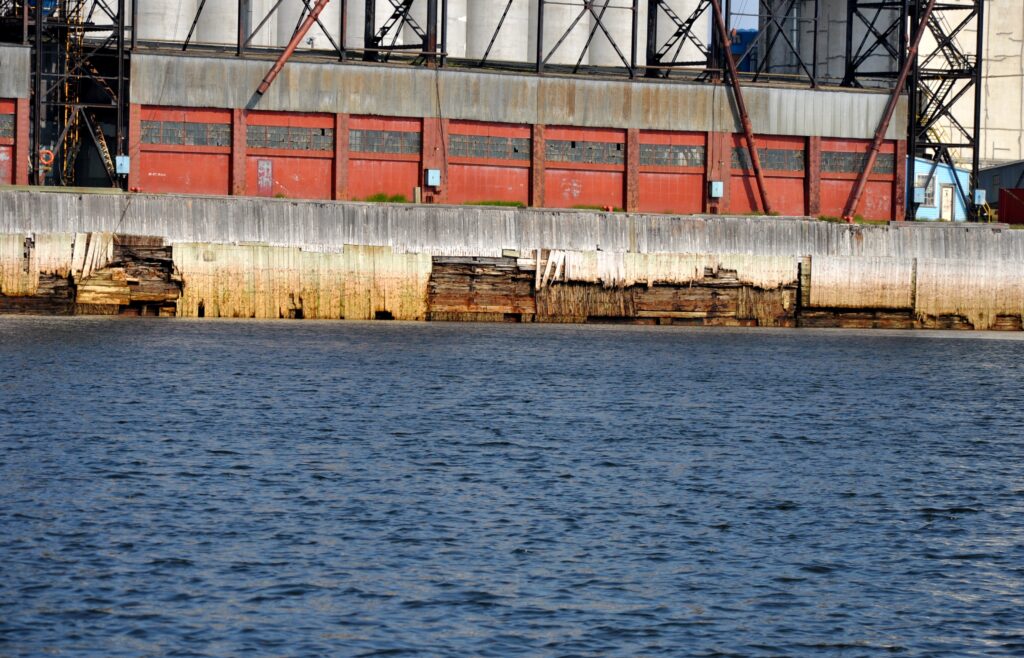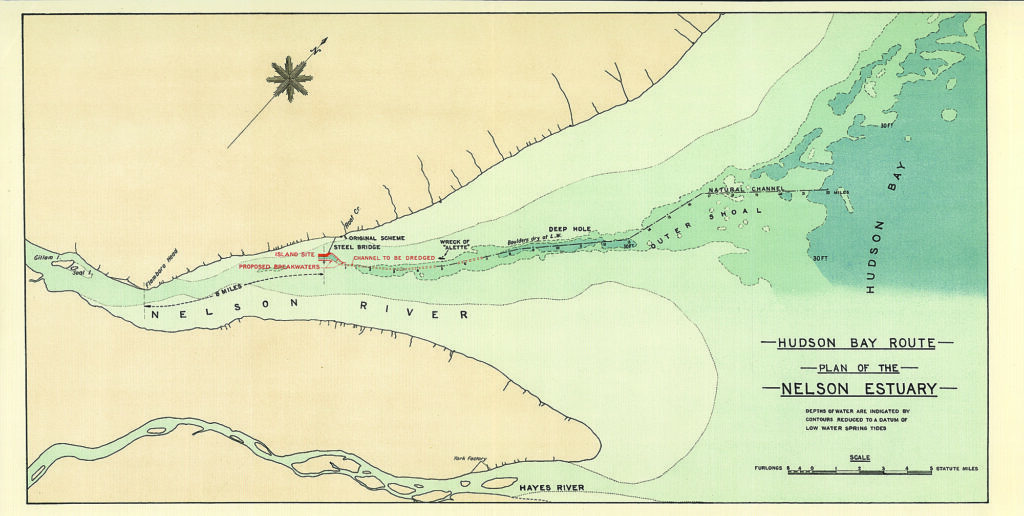By Dorothy Dobbie
If the new government wants a win, it is the building of a new spur line from Amery, just north of Gillam to Port Nelson and the subsequent location of a second port on Hudson Bay. Neestanan would put away many of their headaches over the Northern Gateway line and secure the investment already made.
There has been resistance from Minister Dan Vandal and from Churchill Mayor Mike Spence, both of whom support the Port of Churchill and who seem to feel that the line is a threat to the major investment that has gone into the Northern Gateway line over the past few years (almost $300 million). It is however, exactly the opposite, The Neestanan Line can only enhance the activity of the Northern Gateway, bringing in earned revenue that they will never be able to attract independently. Why? Because the northern part of the line is unsustainable for significant freight transport and the Port itself is inadequate to handle modern or year-round traffic.

How would Neestanan and Port Nelson save the Northern Gateway line? By increasing is traffic substantially from Hudson Bay Saskatchewan to Amery, just north of Gillam where the new hard-bed line would break off.
Neestanan would have to buy passage from Northern Gateway on that part of the line as well as on CN lines coming through Alberta and Saskatchewan. Neestanan, by offering a stable route to the new port for heavy goods would not compete with Northern Gateway which will never be able to accommodate that traffic.
When the Churchill line was built, the bed was stable most of the year because the permafrost stayed frozen. Now, this area in summer is more of a swamp. Trains on the Churchill line past Gillam are slowed to about 25 km/h (15mp/h) on a good day – the 230 kilometers takes nine and a half hours to navigate. This is fine for a leisurely excursion where you can enjoy the scenery, but it is death to any serious freight going north.
And yes, the Arctic Gateway Group that runs the Port of Churchill (a consortium of 29 Indigenous and 12 non-Indigenous communities, mostly in Northern Manitoba) are rebuilding part of the route and adding ballast to create a harder bed, but the work is slow, thanks in part to the need to use the line for passenger traffic. But it is a moot question as to whether this will solve the problem over the long term as knowledgeable northerners say this is a bottomless swamp that will gobble up anything thrown at it over time. And the cost is horrific.
Already, the provincial and federal governments have invested about $300 million to repair the line, but no grain has been shipped through Churchill since 2017. It is highly unlikely that this will change since the federal gain subsidy of $9 per ton was removed some time ago.
So, what is the answer? Neestanan. And it will enable the shipping of far more than grain.
Neestanan
When opening a northern port was first contemplated back in 1912, Port Nelson was meant to be the ocean terminus of the northern railway. Construction blunders, politics and the First World War interrupted the progress on the port and work was abandoned in 1918. The community of 1,000 dwindled away to a ghost town. When the issue was revived, Churchill was chosen as an alternative. Port construction was started in 1927 and finished in 1929.

A lot has changed since then. Ships have tripled in size and the Churchill port, created for 1920s traffic, is just too small to handle the big ships of today, especially the freighters. Although Churchill Port is supposed to be able to accommodate two ships at a time, one seems to be the norm now and other ships must wait offshore for their turn to take on a load of grain. But even without this drawback, the port itself is decrepit and the grain elevator is even more so.
Getting there is half the fun, as they say, and getting from Gillman to Port Nelson is a much easier task than going to Churchill. For one thing, it is nearly 100 km closer to Amery where the line would likely split off. The spur line could be built within 12 months and, instead of over swamp, the route follows an esker or sand and gravel ridge left by the last glaciers. This means a stable line for hauling heavier freight which would be able to travel at the usual freight speed.
The waters around Churchill freeze in winter due to freshwater entry, snowfall, and currents, limiting its availability for trade to about three months of the year. The Nelson River part of the Bay is more prone to slushy ice that can be navigated by icebreakers, making it accessible year-round.
Finally, and most importantly, Neestanan would open an economy for northern indigenous communities. It would also improve access to and from very isolated communities, reducing the cost of living and improving their lives.
Neestanan is owned by First nations groups. They understand the opportunities that can blossom from the additional gateway to the world. They are sick of being patted on the head and treated like pets, when they are more than capable of making wonderful things happen for the good of their own people.
As for the rest of the prairies and ultimately Canada? Having serious access to seawater is a game changer. The idea is supported by both Saskatchewan and Alberta, but also by the folks in northern Ontario who see the advantages of having a nearby port for their products from the Ring of Fire.
It is a win-win-win. I hope Mr. Kinew will see this and continue the support afforded by the previous government to complete the feasibility study which will examine the best location for the new port and determine how to deal with issues surrounding silt, water depth and so on.


